Azabudai Hills: Initiatives for Safety, Environment and Culture
Safety
Hard and Soft Initiatives to Support Life and Business in Times of Disaster
As part of the Azabudai Hills' initiatives to strengthen the safety of urban infrastructure, Mori Building is making great efforts to create urban refuges that people can run to in the event of a disaster.
The three towers of Azabudai Hills incorporate earthquake-resistant features that will allow businesses to continue operating even in the event of an earthquake of the magnitude of the Great East Japan Earthquake. High-strength steel and concrete components are deployed to balance the structures, and vibration-control devices are placed in core areas where vibration during earthquakes can be efficiently reduced, resulting in high resistance to shaking. In addition, large-scale vibration-control devices known as "active mass dampers" will help reduce the swaying that occurs at the tops of buildings during strong winds.
In addition, Mori JP Tower is equipped with a co-generation system and district heating/cooling systems in its basement. Mori Building will be able to supply 100% of the electricity and heat required in the entire Azabudai Hills complex in the event of a disaster, using emergency generators that run on medium-pressure gas supplied in flexible, rupture-resistant pipes.
Furthermore, Azabudai Hills will have about 6,000m² of shelter that can temporarily accommodate up to 3,600 stranded people in the event of an emergency.
Mori Building has signed an agreement with Tokyo's Minato City to accept people in times of disaster at its Roppongi Hills and Toranomon Hills complexes, part of the company's willingness to serve as a disaster-relief base. Under similar public-private partnerships, Azabudai Hills will serve as a disaster-response facility for its surrounding areas.
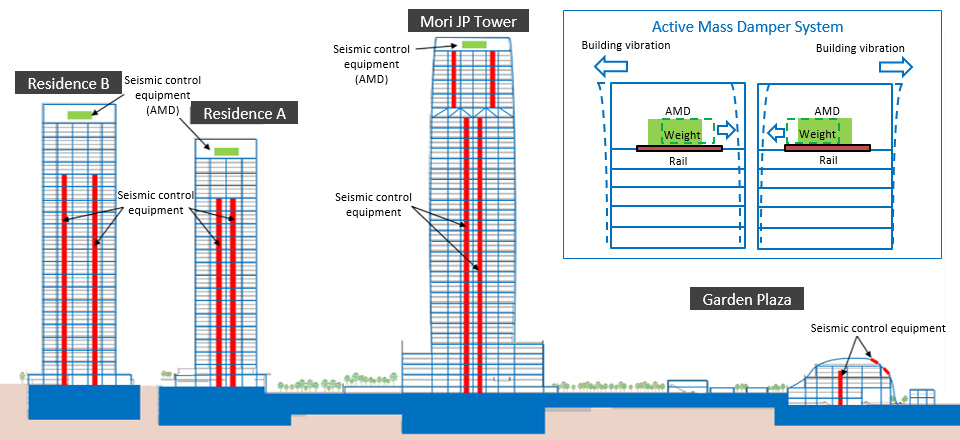
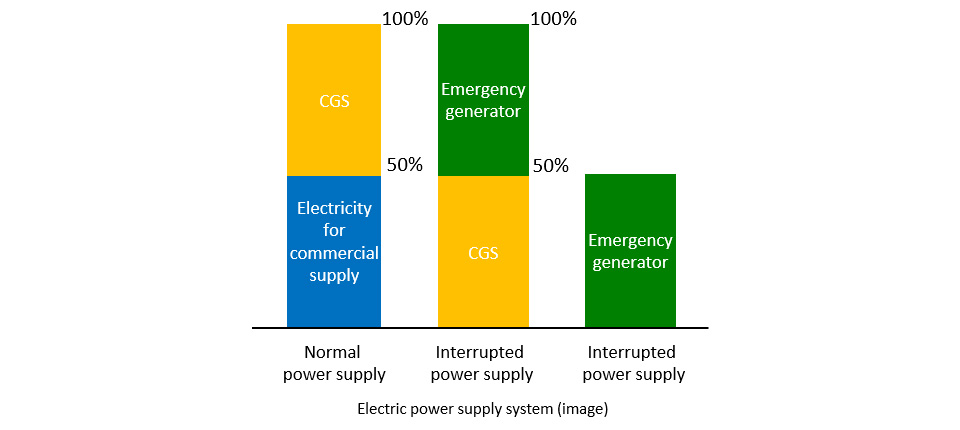
Environment
Where People, Surrounded by Greenery, Achieve Harmony with Nature
The architectural planning of Azabudai Hills began with planning the flow of people and a seamless landscape with a central square, aiming to realize a Modern Urban Village. Proper locations were then considered for three high-rise towers, enabling them to melt into the lush greenery. This is the opposite of the traditional approach of placing the buildings first and then filling in the rest of the space with greenery.
By taking advantage of the topographical differences of the area and providing greenery throughout the site—including the low-rise rooftops of podium buildings—approx. 24,000m² of green space were created, including the approx. 6,000m² Central Green (central square). As a result, Mori Building has been able to create a relaxing urban oasis filled with trees, flowers and waterscapes in the heart of Tokyo.
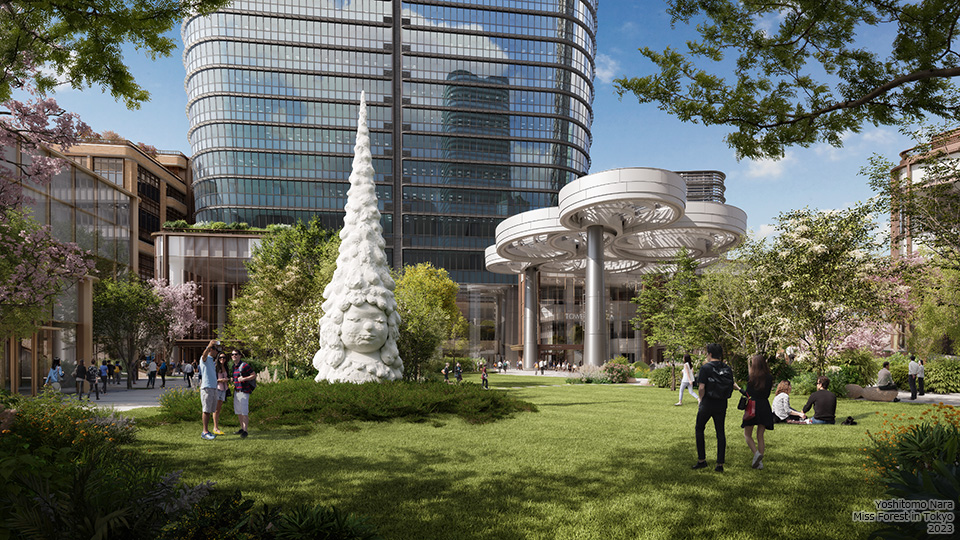
Reducing Environmental Impact through Efforts
Renewable Energy Throughout the Complex
Energy efficiency throughout the Azabudai Hills complex will be optimized on a comprehensive basis by using zero-emission renewable energy in compliance with the international RE100 initiative. From the time construction is completed, all electricity used on the property, including offices, retail facilities, residences and event venues, will be powered by renewable energy. For example, if a visitor charges their EV at one of the quick chargers installed in an Azabudai Hills parking lot, they can drive away confident that they are CO2-free.
Furthermore, a system will be introduced to automatically provide tenants with documentation, confirming that their energy is fully renewable based on tracking information collected with Mori Building's proprietary Energy Web System.
Enhancing Area-wide Energy Efficiency
A high-efficiency energy center operated by Toranomon Energy Network Co., Ltd. will be established in Mori JP Tower to supply energy to the entire Azabudai Hills complex. Energy consumption will be smoothed out by integrating the varied energy uses of offices, residences and hotels in the complex, each of which has its own energy usage patterns, helping to make more efficient use of energy. In addition, AI will be deployed in the energy center to maximize the efficient management of this large complex's unique mixed-use energy consumption.
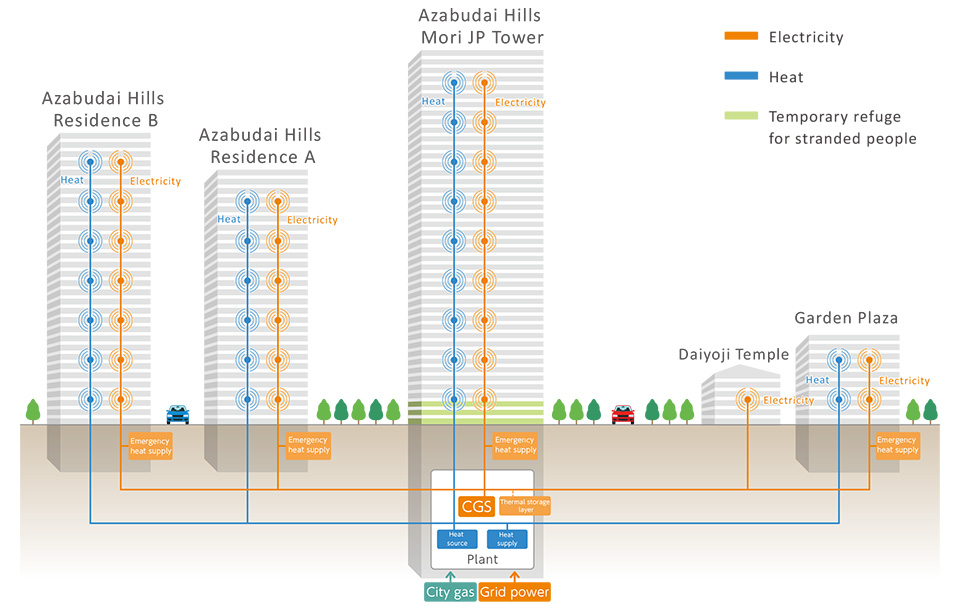
Utilizing Sewage Heat for Heating and Cooling
Sewage heat, an underutilized renewable energy source, will be incorporated into the heating and cooling system throughout Azabudai Hills. The heat from sewage, which is cooler in the summer and warmer in the winter compared to ambient air temperatures, will be recovered and utilized to reduce CO2 emissions by about 70 tons a year.
Reuse of Rainwater, etc. Throughout the Complex
Rainwater that falls on the site will be stored and treated for reuse in watering greenery. In addition, green spaces have been designed to make maximum use of rainwater.
Also, wastewater from residences will be recycled and treated for use in toilets at Mori JP Tower. Furthermore, water-saving faucets and showers throughout the complex will help to reduce water usage to 40% just of the LEED standard.
Collaborating with Partners to Recycle Resources
Along with Mori Building's existing efforts to reduce the total amount of waste generated at its properties, the company has created a web-based system to help tenants visualize their waste volumes and waste sorting.
Mori Building is also working with a beverage manufacturer on a complex-wide bottle-to-bottle model for horizontal plastic recycling.
In addition, the company is preparing to install water servers for bottle refilling to reduce plastic consumption, among other environmental plans that are in line with a circular economy.
LEED and WELL Precertifications
Azabudai Hills has received preliminary Platinum certification, the highest rating in the Neighborhood Development (ND) category of the LEED program. Azabudai Hills was highly evaluated as a mixed-use development with diverse urban functions, a walkable town centered around a plaza, and power supply featuring renewable energy. Azabudai Hills is the first property in Tokyo to be precertified for Platinum in the ND category.
In addition, the office and retail portion of Mori JP Tower has received preliminary Platinum certification, the highest level in the BD+C (CS), a building certification program for newly constructed tenant buildings. The facilities were praised for their comprehensive use of energy, the visualization and reduction of environmental impact during the framework construction stage, and mechanisms for energy conservation in cooperation with tenants, such as demand-control in tenant spaces following construction.
Extensive greenery in the Central Green and high indoor-air quality were also favorably evaluated as wellness initiatives that supported WELL precertification of office and retail space in Mori JP Tower. At present, the property is the world's largest registered site in terms of preliminary certifications and official receipt of top-level Platinum certifications after construction is anticipated.
Moreover, if the Tower receives the envisioned top-ranking Platinum certifications from WELL, in addition to LEED ND and LEED BD+C certification, it is expected to become the world's first skyscraper to achieve all three.
Culture
Presenting a Diverse Range of Cultures to the World from Modern Art to Entertainment
At Azabudai Hills, which focuses on "Green & Wellness," Mori Building's approach has been based on the concept of making the "whole city as a museum." At the center of the overall facility is a museum and art gallery with a total space of around 9,300m². Public art installations are dotted throughout the area, in offices, residences, hotel lobbies and squares, creating a urban space where art and culture blend seamlessly.
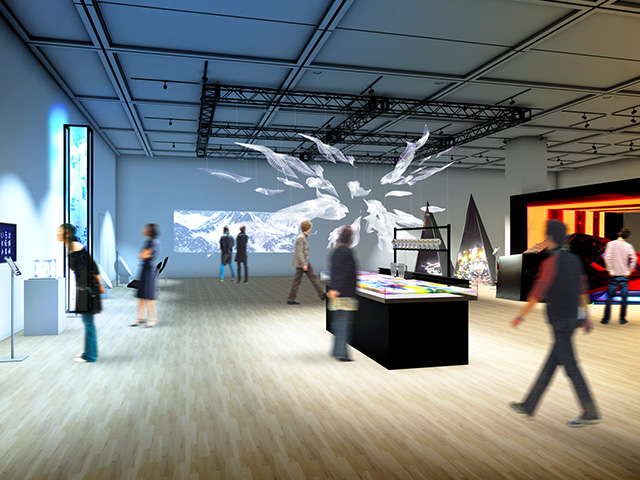
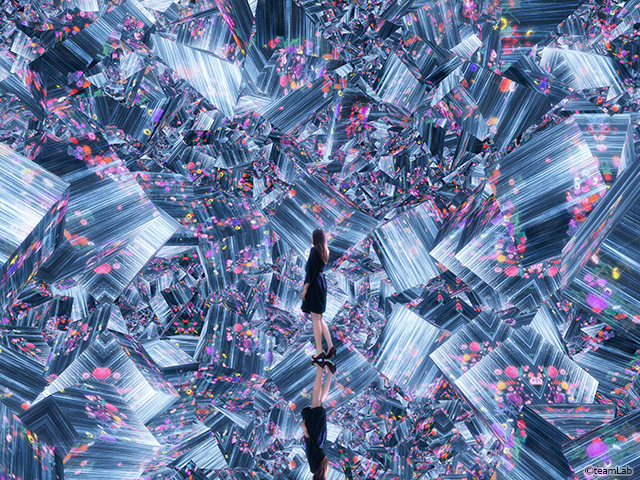
Public Art
For the artworks in the public spaces and living environments in Azabudai Hills, a large and lushly vegetated space in the heart of Tokyo, the Mori Art Museum has curated a selection of works that help people to visualize the energy of the natural world that exists in Azabudai Hills, blending the complex's grand scale with the human scale.
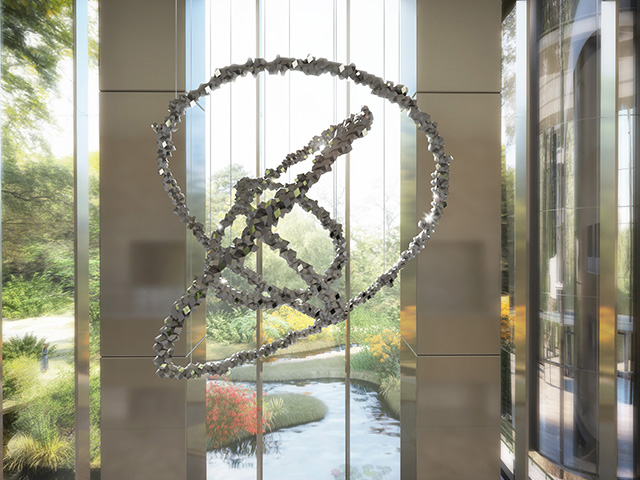
Olafur Eliasson "A harmonious cycle of interconnected nows", 2023
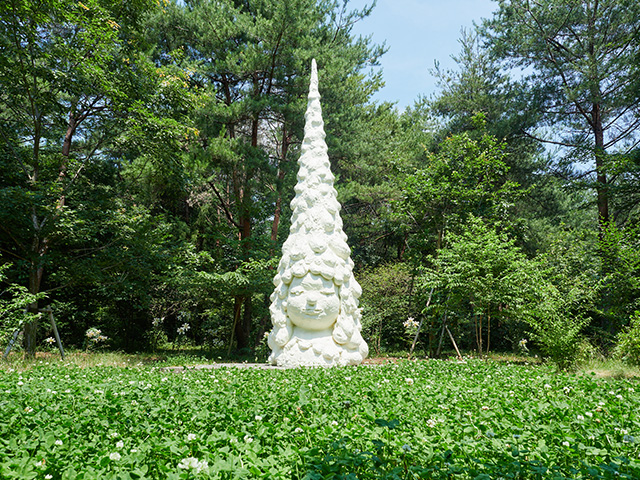
(reference artwork) Yoshitomo Nara "Miss Forest", 2017
Installation view: N's YARD, Tochigi
Photo: Morimoto Mie
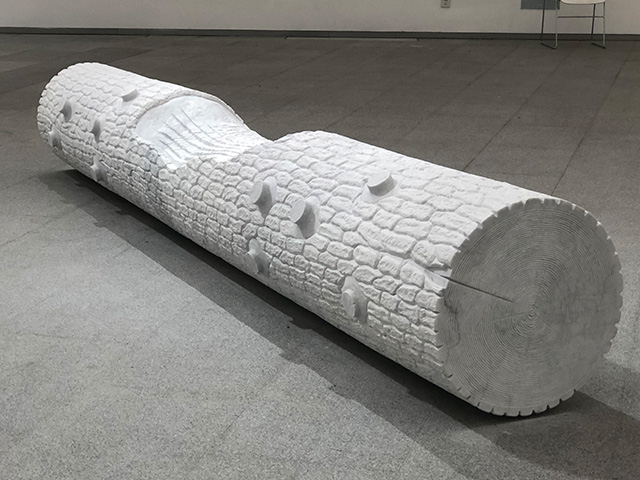
(reference artwork) Sone Yutaka "Wood Log (long version) ", 2017
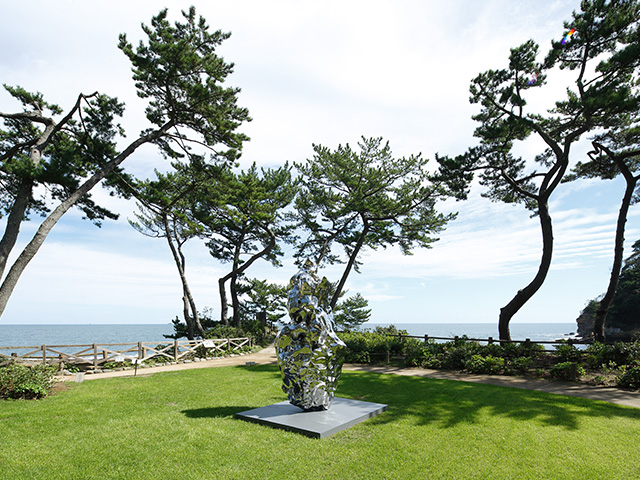
(reference image) Zhan Wang (China) "Artificail Rock No.109", 2015
Photo: Kioku Keizo
Courtesy: KENPOKU ART 2016
